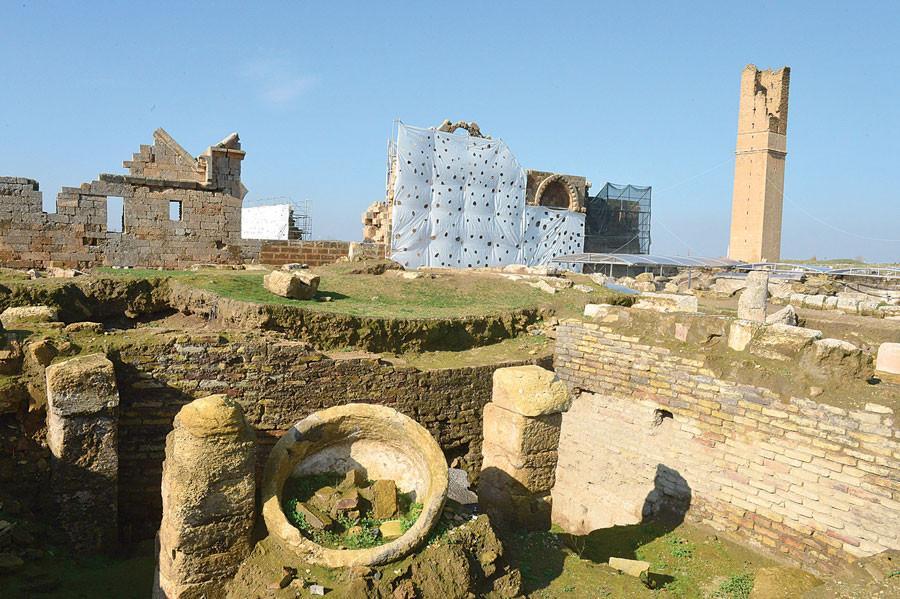
The fact that the archaeological excavations will continue throughout the year on the Harran ruins will contribute to the ancient site’s inclusion in the permanent list of UNESCO World Heritage sites.
The ancient ruins in the southeastern province of Şanlıurfa, which is currently on UNESCO’s Temporary Heritage List, welcomes thousands of local and international visitors with
the world’s first Islamic university and the remnants of the Ulu Mosque, dating back to the 700’s in the Umayyad era.
Speaking to the state-run Anadolu Agency, the deputy head of the Harran excavations, Süheyla İrem Mutlu said that after Göbeklitepe was included in the UNESCO World Heritage List, eyes turned on Harran, which has been on the temporary list since 2000.
Mutlu said that the excavations of the Harran ruins, which have been a permanent settlement since 6,000 B.C. and was the capital of the Assyrians and Umayyad for a period in history, have been continuing since 1950.
Harran excavations have so far unearthed palaces, inns, baths and bazaars, she said, adding that they predicted that they would found many more in the years to come.
Mutlu said it was great news that Harran is one of the places, where the excavation period was increased to 12 months by the Culture and Tourism Ministry, adding that it was six months in previous years.
“The continuation of excavations of the Harran ruins throughout the year will play an effective role in the inclusion of the ancient site in the permanent list of UNESCO,” she added.
Mutlu said that 80 percent of the excavations in the ruins have been completed, and continued:
“In this context, the extension of the period is very important. We believe that
we will enter the UNESCO permanent heritage list. With this great news, we will have the opportunity to revive Harran more comfortably. Extending the excavation period to 12 months will make everything
easier for us.”
Important medical center
The works carried out in the historical region have lately unearthed a medieval earthenware bottle containing medicine.
The 900-year-old bottle with the image of two snakes twined on it, the symbol of today’s medicine, dates back to the Zengids, a Turkic dynasty that ruled the Levant and Upper Mesopotamia on behalf of the Seljuks.
The archeological discoveries imply that Harran could have been an important medical center throughout history.
During excavations carried out in the Harran Palace in the ancient site, a three-domed bath was unearthed, along with its cold, warm and furnace sections.
Harran Palace is one of the rare examples of structures that have survived since
the Middle Ages in Middle Eastern countries. Built in the Omayyad period, the three-story building has hundreds of rooms.